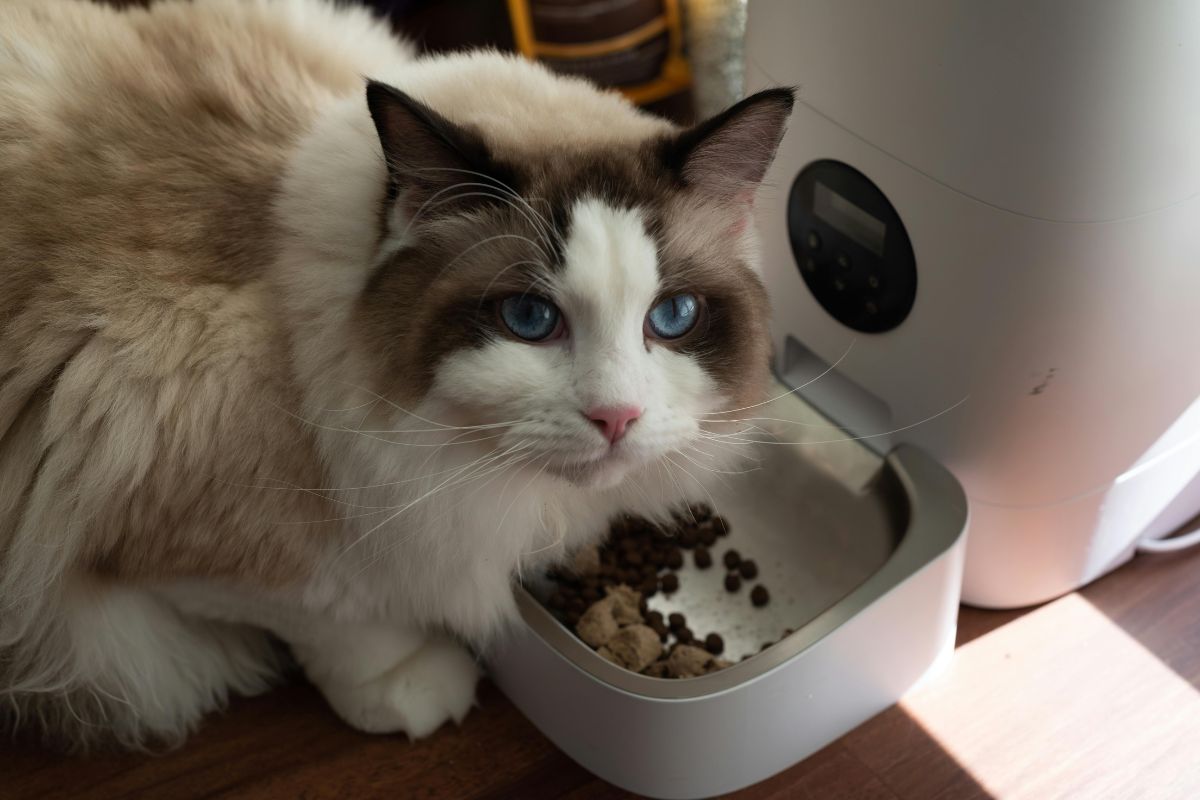
(And yes — there’s more help waiting inside our book, Feed the Cat Better.)
If you’ve ever stood in the pet food aisle staring at shelves of cans and kibble, wondering whether to go with wet food, dry food — or both — you’re not alone.
Even as experienced cat breeders and feline behavior experts, we’ve been there too.
At Brigite’s Bengals, we’ve spent years raising vibrant, healthy cats — and guiding new cat parents through the overwhelm of food labels, ingredient lists, and conflicting advice. What we’ve learned is this: the best diet starts with understanding your cat’s needs, your routine, and how the food you choose impacts long-term wellness.
Here’s our take on the wet vs. dry cat food debate — real-world tested, vet-informed, and straight from the feeding routines of our own cats.
🍽 Why This Debate Exists in the First Place
Cats are obligate carnivores — they thrive on animal-based proteins and naturally low-carb diets. But how that nutrition is delivered can make a difference.
Spoiler:
There’s no one-size-fits-all answer. The “right” approach depends on your cat’s hydration habits, age, dental health, activity level, and preferences.
That said, there are clear benefits — and drawbacks — to both wet and dry options.
💦 The Case for Wet Cat Food
Pros
✔ High moisture content (supports hydration)
✔ Usually more palatable — especially for picky eaters
✔ Easier to chew for kittens or seniors
✔ Supports urinary tract health
✔ Often mimics the texture of a cat’s natural prey
Cons
⛔ More expensive long-term
⛔ Needs refrigeration after opening
⛔ Can’t be left out for extended periods
⛔ Slightly messier to serve
From Our Home to Yours:
Luna, one of our early queens, thrived on wet food as a kitten. It supported her hydration and digestion beautifully during growth spurts. But one of our older rescues — Milo —? He wanted nothing to do with it. Lesson: not all cats take to wet food, but when they do, it’s a hydration game-changer.
🥣 The Case for Dry Cat Food
Pros
✔ Convenient and shelf-stable
✔ More affordable per serving
✔ Can be free-fed for grazers
✔ Some dental friction benefits (though debated)
Cons
⛔ Low moisture — can contribute to dehydration
⛔ Higher in carbs, depending on brand
⛔ Can lead to overfeeding if not portioned properly
⛔ Not ideal for cats prone to urinary issues
Our Experience:
Dry food makes life easier on busy days — and many of our breeding cats enjoy a high-quality kibble alongside fresh proteins. We’ve seen success using brands like Open Farm, Nulo, and Ziwi — always grain-free and rich in real meat protein.
🐾 The Smart Middle Ground: Combination Feeding
Many of our kitten adopters — and ourselves — use combination feeding: a high-quality dry food paired with a moist topper or wet food meal once or twice daily.
Why it works:
✔ Boosts hydration and taste appeal
✔ Offers texture variety
✔ Allows for portion control
✔ Balances convenience and nutrition
Pro Tip from Feed the Cat Better:
Start slow. Mix a teaspoon of wet food into your cat’s usual kibble and observe digestion and interest over a few days. Most cats adjust well — especially if the food is fresh, species-appropriate, and free from unnecessary fillers.
🧠 Age & Health: What Matters Most
Different life stages require different strategies:
Kittens
Wet food offers hydration and easy chewing
(Spoiler: All Brigite’s Bengals kittens are introduced to both early)
Adults
Flexible — many thrive on a mix of wet and dry, with occasional raw toppers
Seniors
Wet or gently cooked food is often better for aging teeth and kidneys
Medical Note:
If your cat is prone to UTIs, kidney issues, or diabetes, moisture content and ingredient quality matter more than ever. Always consult your vet and read labels carefully.
💸 Budgeting for Better Nutrition
Dry Food
✔ More cost-effective
✔ Great base if you’re consistent about portioning
Wet Food
✔ Higher cost, but beneficial when used intentionally
✔ Great for hydration, digestion, and picky eaters
Our Rule of Paw:
It’s not about the fanciest food — it’s about consistent quality. Even a modest shift in ingredients or feeding rhythm can drastically improve coat shine, energy levels, and even litter box odor.
🐱 Final Verdict? Let Your Cat (and Gut) Guide You
Some cats adore wet food. Others won’t touch it. Some need the hydration. Others have iron stomachs and can graze happily all day.
What matters is tuning into your cat’s energy, stool quality, hydration, and weight — and making small, consistent changes that support long-term health.
And if you need guidance on what those changes should be?
📘 Our book, Feed the Cat Better, walks you through everything — from decoding ingredient labels and food marketing tricks to building out your own custom feeding routine based on your cat’s needs.
Because in the end, a well-fed cat is a healthy cat. And a healthy cat is a happier companion — one who thrives beside you, from kittenhood to their golden years.
